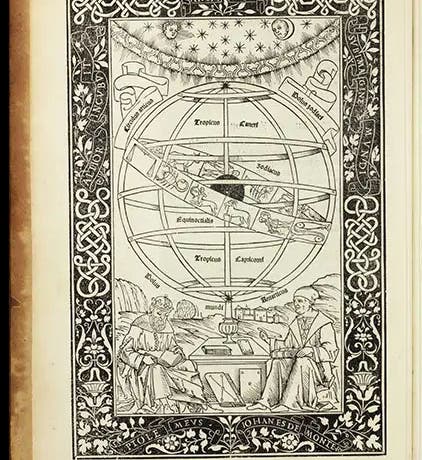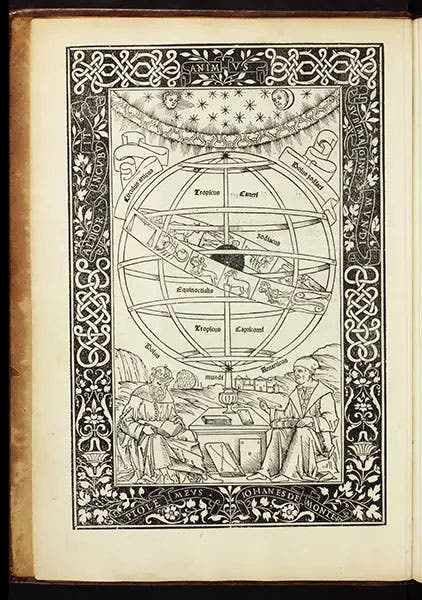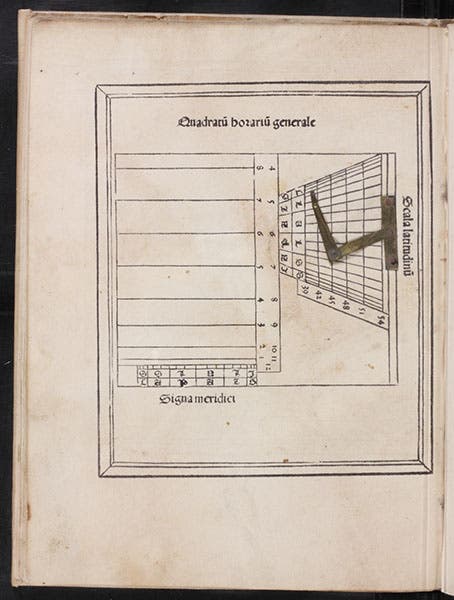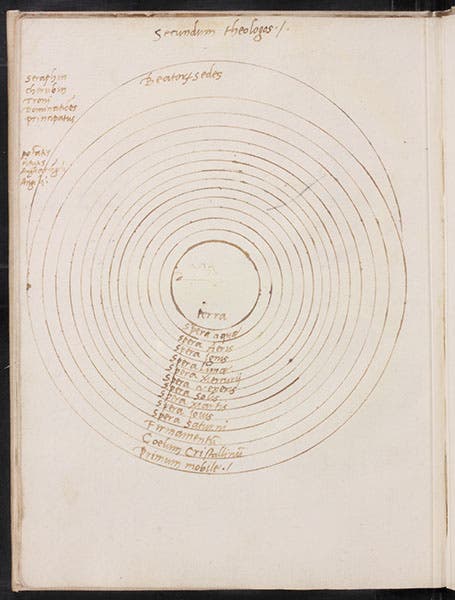Scientist of the Day - Johannes Regiomontanus
Johannes Regiomontanus, a German astronomer, was born June 6, 1436. Regiomontanus taught at Vienna in the 1450s, then travelled to Italy to take advantage of an opportunity to translate the Almagest, the great second-century astronomical treatise of Ptolemy of Alexandria, from its original Greek into Latin. Regiomontanus then moved in 1470 to Nuremberg to set up a printing establishment, the very first to be devoted to books of science and mathematics. His intent was to print the Almagest, Euclid's Elements, the complete works of Archimedes, as well as his own Epitome of the Almagest, as we know from a list he printed up of his proposed publishing program. He did publish an edition of the Roman astrological poet Manilius; a book called the New Theory of the Planets, written by his former colleague in Vienna, Georg Peurbach; and an astronomical almanac. But in 1476, Regiomontanus travelled to Rome to consult on the calendar problem, and there he died under mysterious circumstances--some think he was a plague victim, others that he was poisoned by academic enemies. Either way, his ambitious publishing program was cut short. Fortunately, his Epitome was finally published in 1496, in a beautiful edition, and it served as an introduction to Ptolemy's astronomy for several generations of students, including Nicholas Copernicus.
We do not have any imprints from the Nuremberg press of Regiomontanus--those are very scarce publications. But we do have a first edition of the Epitome, with a woodcut frontispiece (first image) that depicts an armillary at the top, and portraits of Ptolemy and Regiomontanus at the bottom (second image). We also have a 1485 edition of his almanac, called the Calendarium (third image), with an articulated brass pointer still riveted in place at the back (fourth image). Our copy has been annotated by an early owner, who not drew in with his compass, on a blank page, a nested set of cosmological spheres, as per Aristotle, but added in, at upper left, places for the nine orders of the heavenly host, from angels all the way up to seraphim (fifth image).
William B. Ashworth, Jr., Consultant for the History of Science, Linda Hall Library and Associate Professor emeritus, Department of History, University of Missouri-Kansas City. Comments or corrections are welcome; please direct to ashworthw@umkc.edu.











